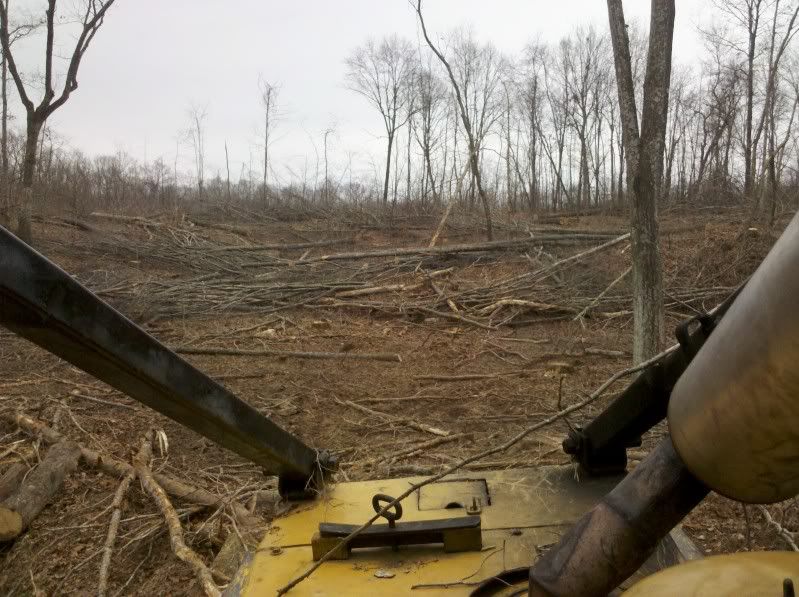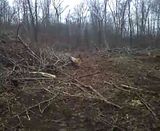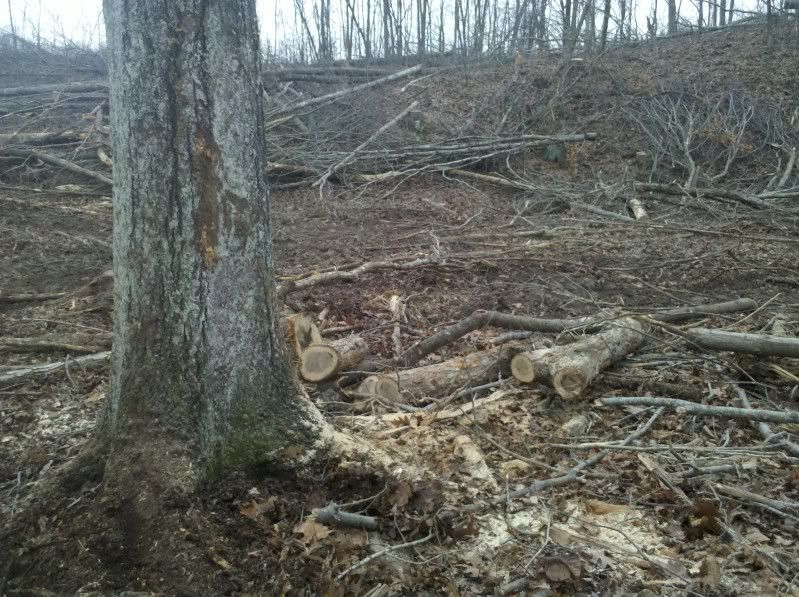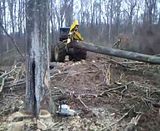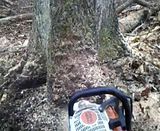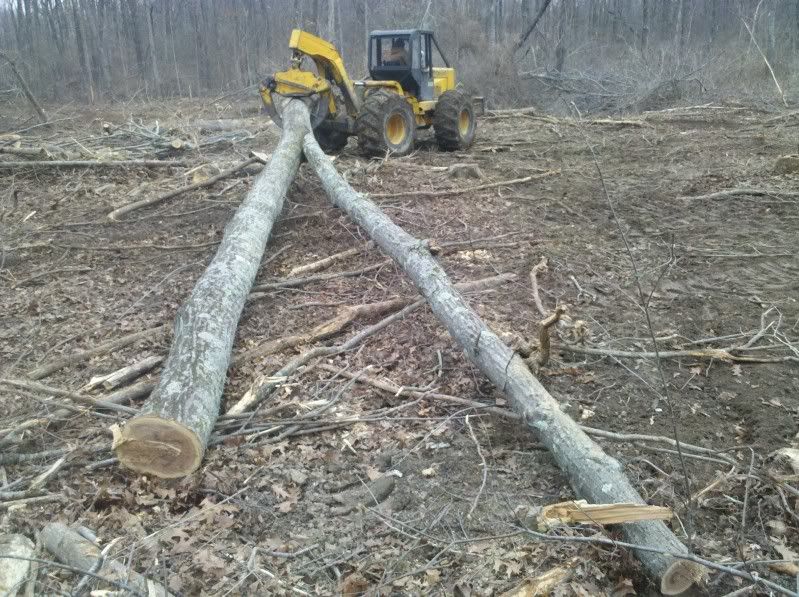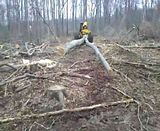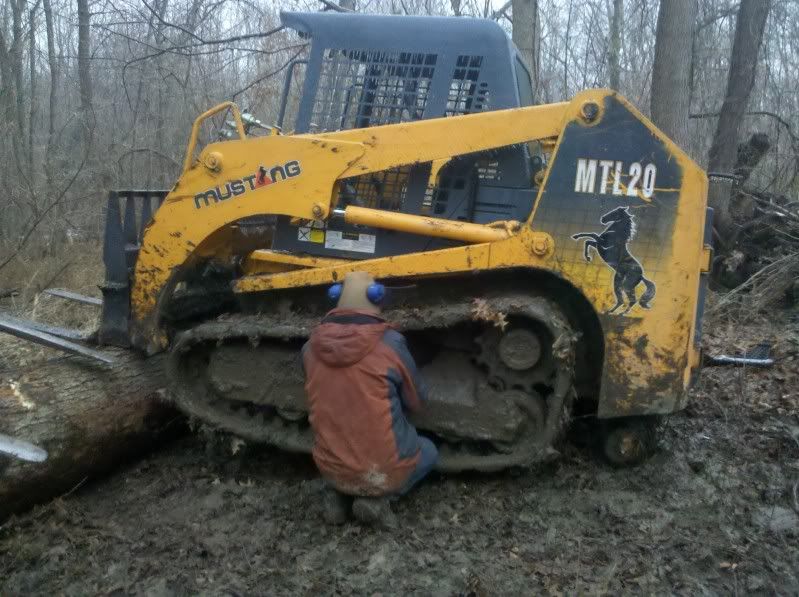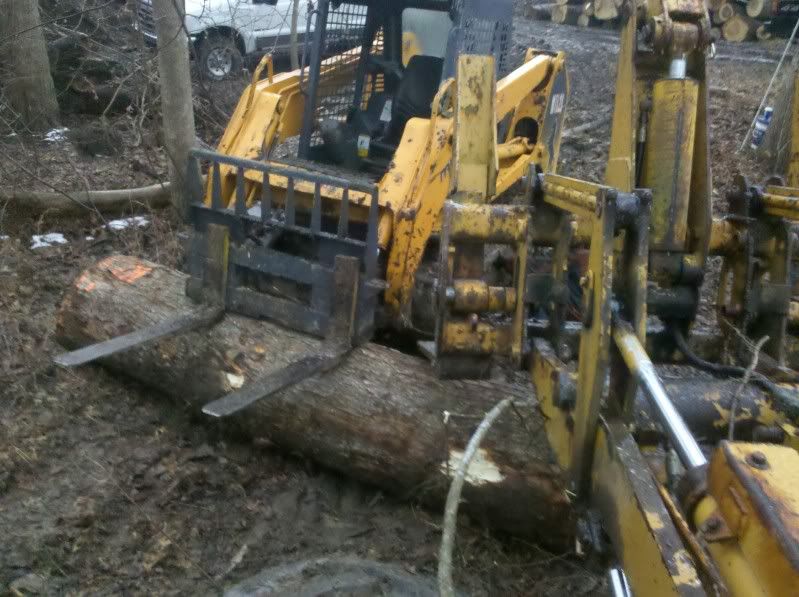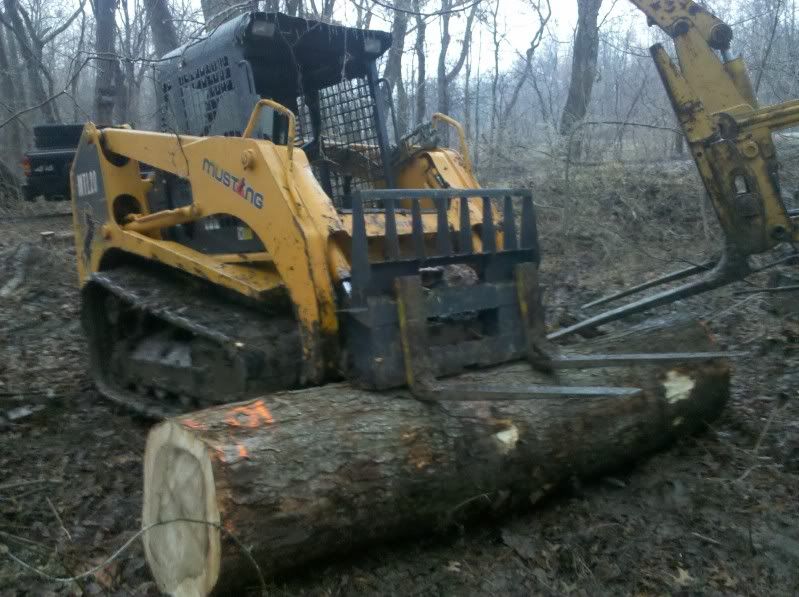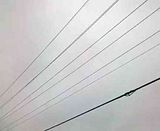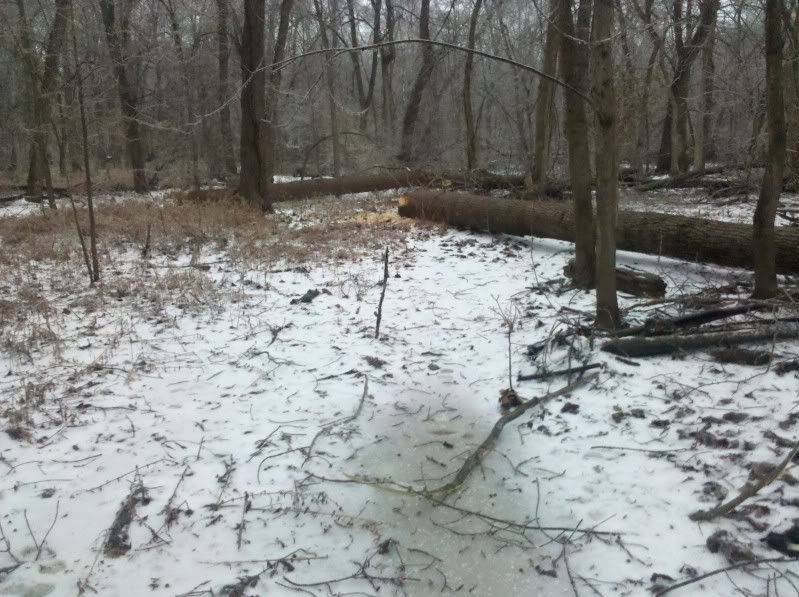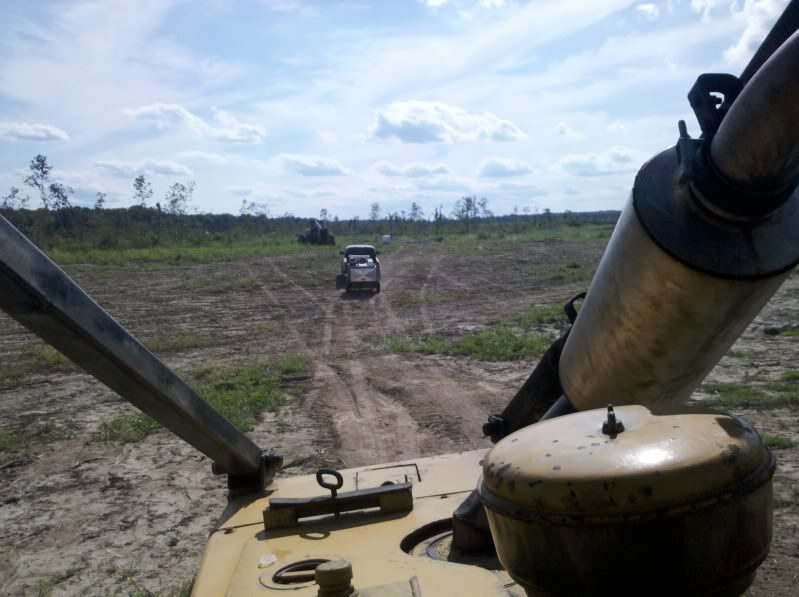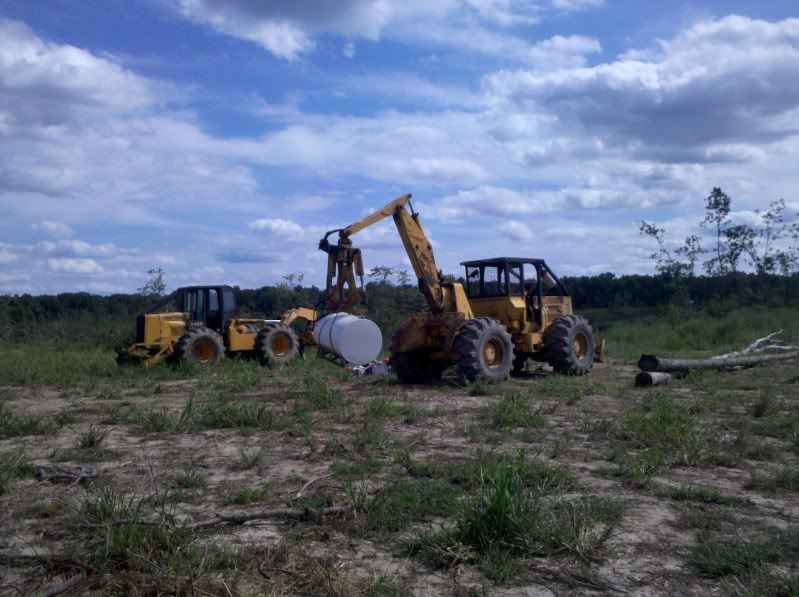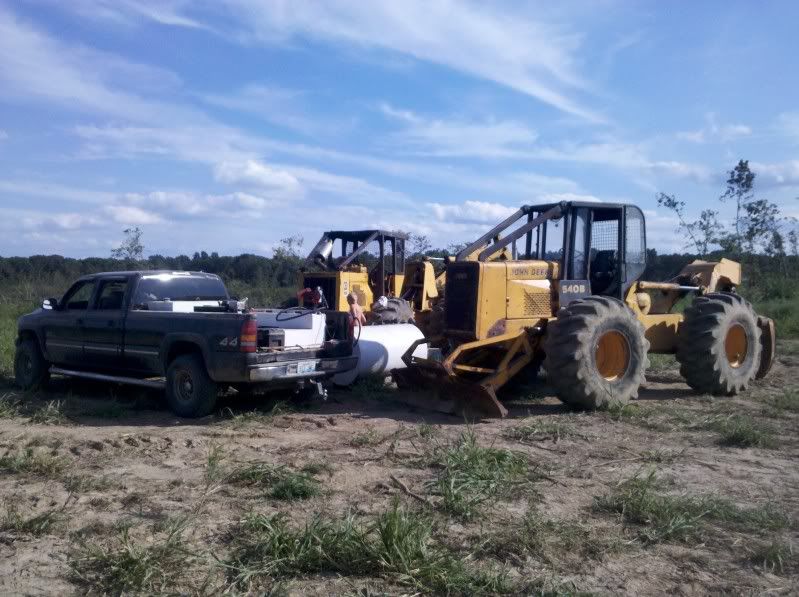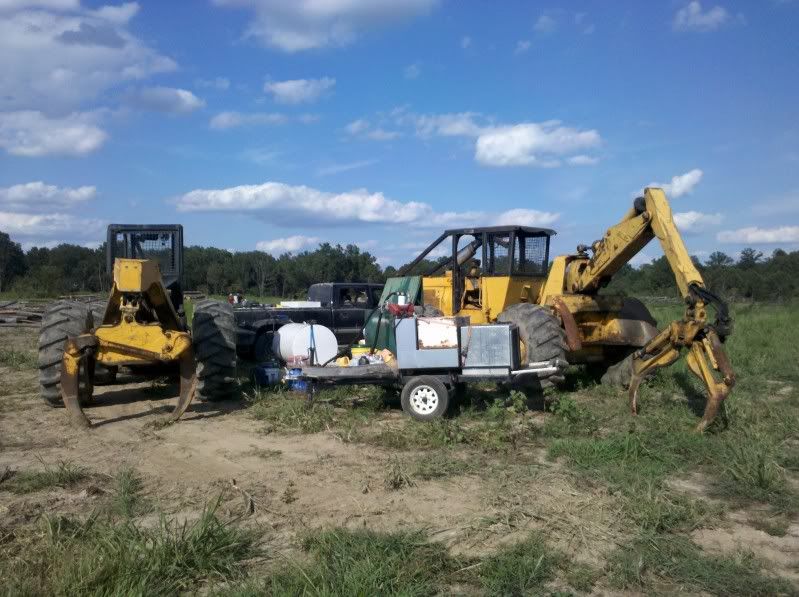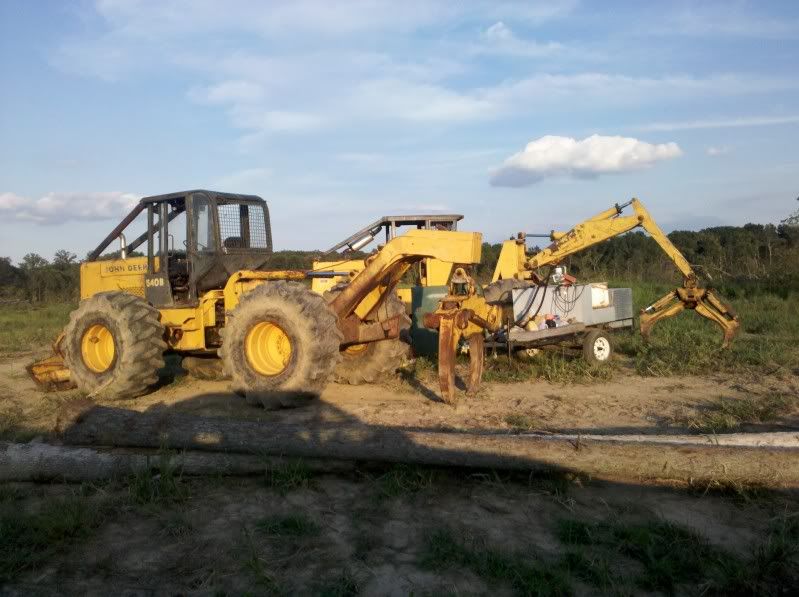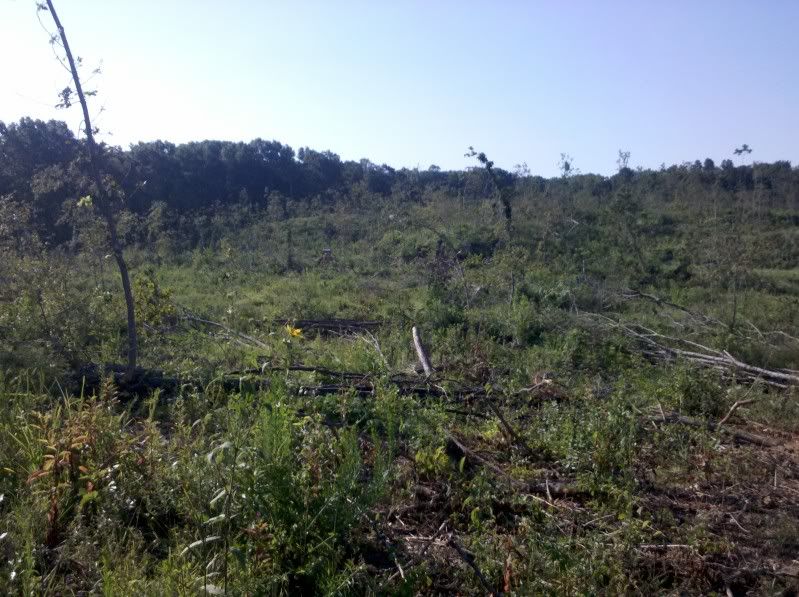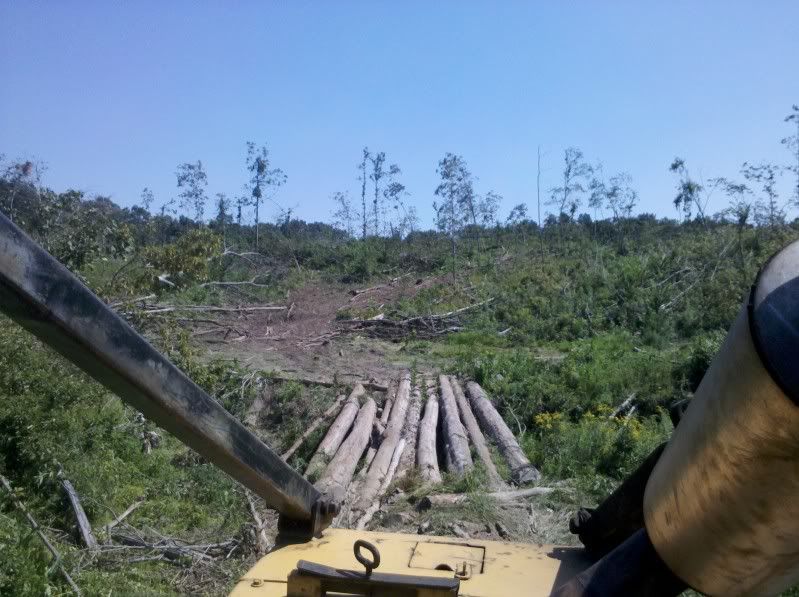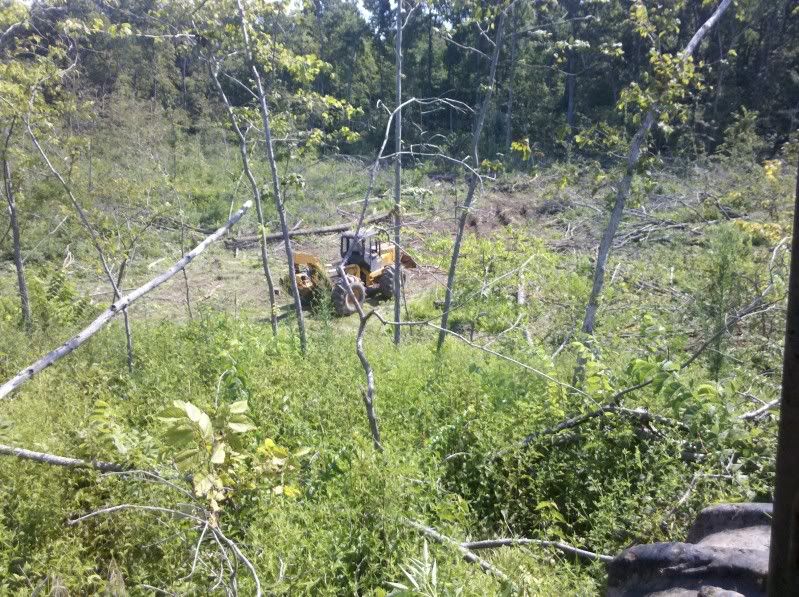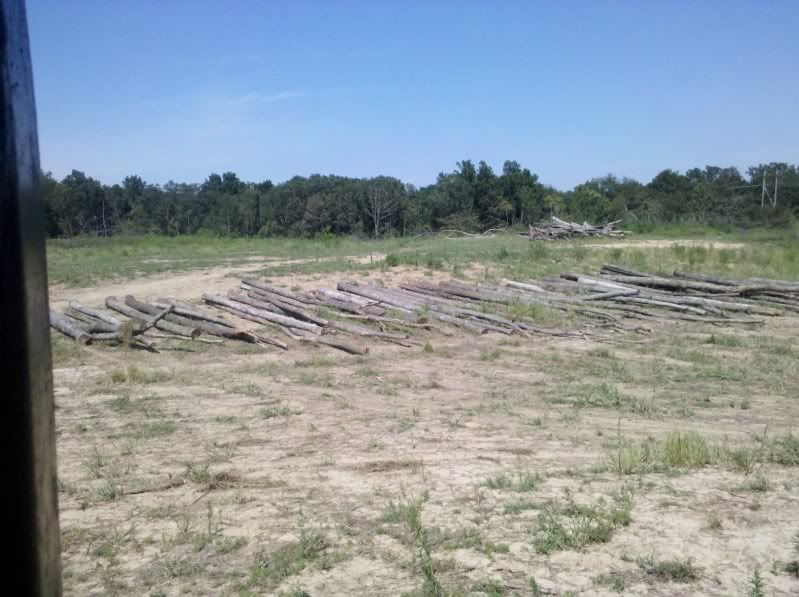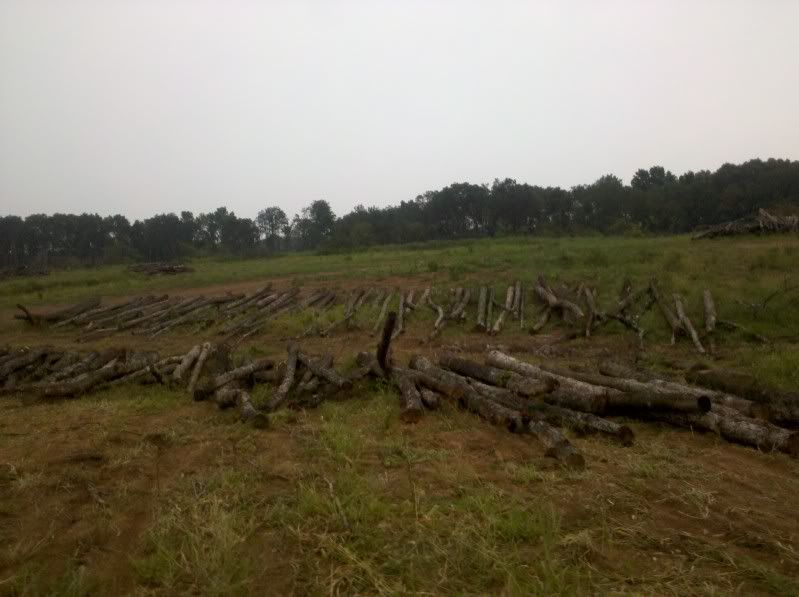You certainly have me thinking. I need to see what other bottoms/wet land type of work we have and how it is laid out. I'm going to talk to one of the guys that typically only buys bottoms ground in say 40 acre tracts, but this stuff is select cut and basically sparse large pin oaks 18" and up to say 30"+.
It would seem to me (ignorant of this stuff) that it would be a pain to keep hauling that cable around over and over each 40-60 feet in a wheel spoke pattern or moving over each time from say right to left or whatever.
I was thinking of combining wheeled skidders with one long mainline through say the middle of the job. Because it isn't the few trips here and there that kill the mudd or sink the skidders, its the repeated trips down the same trail over and over again. I could possibly grapple skid the logs over to the cable line and then haul it up/across to the landing with the yarder.
I'm not sure of the efficiency of this thought, but getting stuck or not working due to, too wet of weather isn't making money either. There are 5 jobs that are currently under about 2-8" of water and ice, with waders and a cable yarder we could be pulling wood ..... possibly.
I'm certainly going to mull this over in my head.
How would it work if the ground had little to no hills on it ............... basically flat. How would I get the "carriage" out to the logs/choke setter if it is flat? and no gravity to help?
Later,
Sam
You'd be OK in a clearcut. You could do what used to be done here on flat ground, run a high lead setup. You wouldn't need a carriage, just butt rigging, which was what they were doing on Axmen last week.
You'd save money as you would only need a two drum machine. One for the outhaul and one for the inhaul, or haulback. The haulback runs the line back into the unit, then the mainline drum spools it back in.
The length of the skid depends on the capacity of your yarder. How much weight can it handle and then continue to get a decent payload to the landing? How much room for line is on the drum?
A guy here got a fixer upper for $5000. It broke down a lot, but not as much as his ancient machine, and took a while to figure out how to run it. He had a lot of experience with equipment too.
A former skidder logger managed to figure out how to run a yarder and carriage on his own. He made the usual mistakes, forgetting to set the brake so the mainline unspooled and made a snarl, not guying up his tail tree...
To run a flyer, shotgun, gravity system you need hills. The steeper the better.
I don't think that would work there.
You could do a thinning, but you'd need a three drum machine and a carriage. You'd have to have a haulback, the mainline and the skyline. You'd have to have a motorized carriage and they are very spendy. They will work with a haulback.
To do a thinning, you need to cut out the skyline corridors unless you have wide spacing. Here, the logger lays out a straight line and a pathway, ranging anywhere from 8 to 12 feet wide is cut on that line. Straight is mandatory. The skyline won't bend for a curve. You can lay out a wagonwheel pattern, using one landing. This is efficient but it will make a mini-clearcut where the corridors come together at the landing. You can just go straight and hop down the road every 300 feet or so. This looks better but you have to find new guyline stumps for each landing, unless you have a Yoader. Yoaders are designed to not need guylines.
The carriage goes down or up the skyline and is stopped where it is needed. The choker setter pulls out the line, which a motorized carriage will pull from they yarder, and hooks on the turn.
That's another thing. Signals. I've seen guys work without Talkie Tooters and it is scary. Saw the chokersetter jump way up in the air when the guy on the yarder misread his hand signals and started bringing in the turn too soon.
Talkie Tooters, or bugs, are the radio gizmos that make the whistle go. Like TOOT for stop, and TOOT TOOT TOOT for full speed ahead, etc. That is a language in itself.
Koller makes a small yarder that fits on a truck or back of a tractor. It is a good one for a small outfit, because the yarder controls are operated on the ground so you don't have to climb up and down if you plan to run the yarder and unhook the chokers.
That's just part of it. There's lots of rigging styles, depending on what you need to do or have to work with. I don't know the mechanics of rigging the blocks.
That's the other thing, you need to know what species of tree is the best to use for guylines and tail trees. Will you need to top the tail tree? Also, what are the safety requirements in your state? That's enough from me. I'll find the link for yarder pictures.

























































